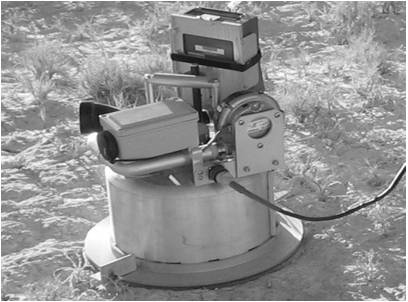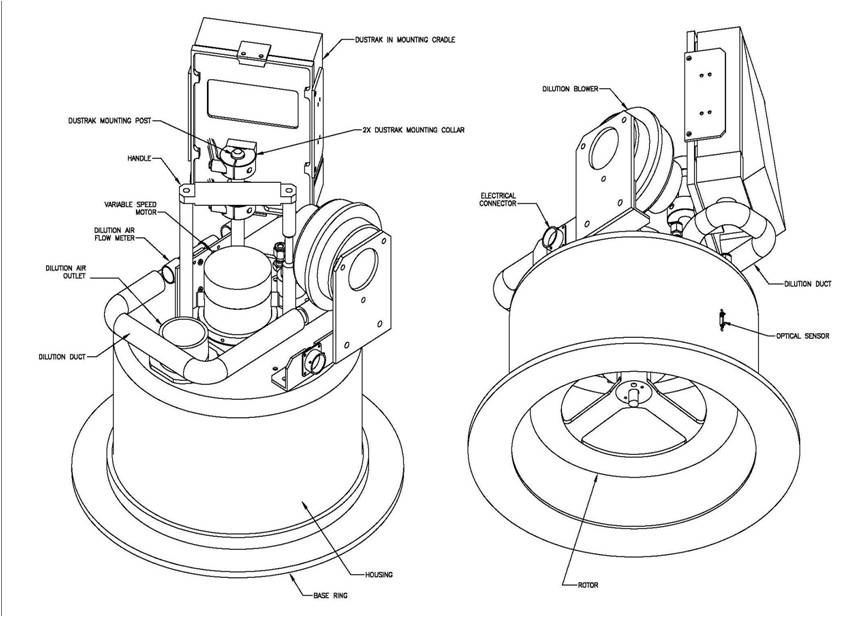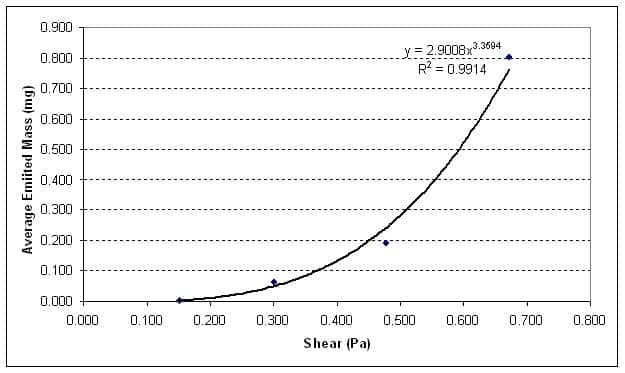Particulate Emissions Measurement Laboratory Publications from 2003-2008
2008
Macpherson, T., W.G. Nickling, J.A. Gillies, and V. Etyemezian (2008). Dust emissions from undisturbed and disturbed supply limited desert surfaces. J. Geophys. Res., Earth Surface (in press).
Brown, S. W.G. Nickling, and J.A. Gillies (2008). A wind tunnel examination of shear stress partitioning for an assortment of surface roughness distributions. J. Geophys. Res., Earth Surface, 113, doi:10.1029/2007JF000790.
King, J., W.G. Nickling, and J.A. Gillies (2008). Investigations the law-of-the-wall over sparse roughness elements. J. Geophys. Res., Earth-Surface, 113, F02S07, doi:10.1029/2007JF000804.
Sweeney, M., V. Etyemezian, T. Macpherson, W. Nickling, J. Gillies, G. Nikolich, and E. McDonald (2008). Comparison of PI-SWERL with dust emission measurements from a straight-line field wind tunnel. J. Geophys. Res., Earth Surface, 113, F01012, doi:10.1029/2007JF000830.
2007
Gillies, J.A., V. Etyemezian, H. Kuhns, J. Engelbrecht, S. Uppapalli, and G. Nikolich (2007). Dust emissions caused by backblast from Department of Defense artillery testing. J. Air & Waste Manage. Assoc., 57, doi:10.3155/1047-3289.57.5.551, 551–560.
Etyemezian, V., G. Nikolich, S. Ahonen, M. Pitchford, M. Sweeney, J. Gillies, and H. Kuhns (2007). The Portable In-Situ Wind Erosion Laboratory (PI-SWERL): a new method to measure PM10 windblown dust properties and potential for emissions. Atmos. Environ., 41, 3789-3796.
Gillies, J.A., W.G. Nickling, and J. King (2007). Shear stress partitioning in large patches of roughness in the atmospheric inertial sublayer. Boundary-Layer Meteorology, 122(2), doi: 10.1007/s10546-006-9101-5, 367-396.
2006
Gertler, A., H. Kuhns, M. Abu-Allaban, C. Damm, J. Gillies, V. Etyemezian, R. Clayton, and D. Proffitt (2006). A case study of the impact of winter road sand/salt and street sweeping on road dust re-entrainment. Atmos. Environ., 40(31):5976-5985.
King, J., W.G. Nickling, and J.A. Gillies (2006). Aeolian shear stress ratio measurements within mesquite-dominated landscapes of the Chihuahuan Desert, New Mexico, USA. Geomorphology, 82(3-4):doi:10.1016/j.geomorph.2006.05.004, 229-244.
Gillies, J.A., W.G. Nickling, and J. King (2006). Aeolian sediment transport through large patches of roughness in the atmospheric inertial sublayer. J. Geophys. Res., Earth Surface, 111, F02006, doi:10.1029/2005JF000434.
2005
King, J., W.G. Nickling, and J.A. Gillies (2005). Representation of vegetation and other non-erodible elements in aeolian shear stress partitioning models for predicting transport threshold. J. Geophys. Res., Earth Surface, 110 (F4):F04015 doi:10.1029/2004JF000281.
Moosmüller, H., R. Varma, W.P. Arnott, H.D. Kuhns, V. Etyemezian, and J.A. Gillies (2005). Scattering cross section emission factors for visibility and radiative transfer applications: military vehicles traveling on unpaved roads. J. Air and Waste Manage. Assoc., 55:1743-1750.
Gillies, J.A., V. Etyemezian, H. Kuhns, D. Nickolic, and D.A. Gillette (2005). Effect of vehicle characteristics on unpaved road dust emissions. Atmos. Environ., 39:2341-2347.
Kuhns, H., V. Etyemezian, J.A. Gillies, S. Ahonen, C. Durham, and D. Nikolic (2005). Spatial variability of unpaved road dust emissions factors near El Paso, Texas. J. Air and Waste Manage. Assoc., 55:3-12.
2004
Etyemezian, V., J.A. Gillies, H. Kuhns, D. Gillette, S. Ahonen, D. Nikolic, and J. Veranth (2004). Deposition and removal of fugitive dust in the arid southwestern United States : measurements and model results. J. Air and Waste Manage. Assoc., 54:1099-1111.
2003
Etyemezian, V., H. Kuhns, J.A. Gillies, M. Green, M. Pitchford, and J. Watson (2003). Vehicle based road dust emissions measurement (I): methods and calibration. Atmos. Environ., 37:4559-4571.
Etyemezian, V., H. Kuhns, J.A. Gillies, J. Chow, M. Green, K. Hendrickson, M. McGowan, and M. Pitchford (2003). Vehicle based road dust emissions measurement (III): effect of speed, traffic volume, location, and season on PM10 road dust emissions. Atmos. Environ., 37:4583-4593.
Abu-Allaban, M., J.A. Gillies, and A.W. Gertler (2003). Applications of a multi-lag regression approach to determine on-road PM10 and PM2.5 emission rates. Atmos. Environ., 37:5157-5164.
Abu-Allaban, M., J.A. Gillies, and A.W. Gertler (2003). Tailpipe, resuspended road dust, and brake-wear emission factors from on-road vehicles. Atmos. Environ., 37:5283-5293.





